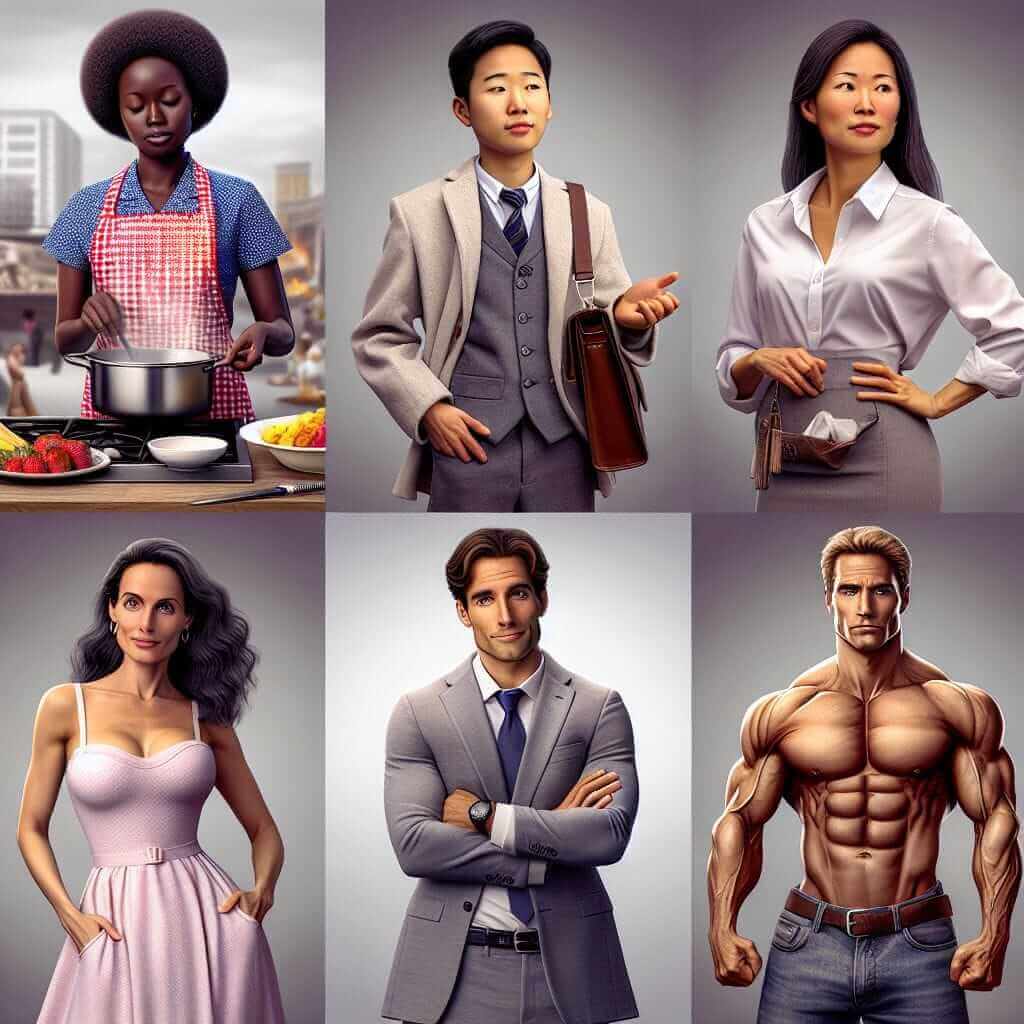The influence of media, encompassing television, films, advertising, and social media, on our perceptions of gender roles is a topic frequently appearing in IELTS Writing Task 2. This theme delves into how media representations shape our understanding of what society expects from men and women.
Here are some potential IELTS Writing Task 2 questions related to this topic:
- “Media portrayals frequently reinforce traditional gender roles.” To what extent do you agree or disagree with this statement?
- Discuss the positive and negative impacts of media portrayals on young people’s understanding of gender roles.
- Some people argue that media reflects societal views on gender, while others believe it shapes these views. What is your opinion?
Sample Essay: Media’s Reinforcement of Traditional Gender Roles
Let’s delve into an essay response for the first question:
“Media portrayals frequently reinforce traditional gender roles.” To what extent do you agree or disagree with this statement?
It is undeniable that media representations often perpetuate traditional gender roles, profoundly impacting societal perceptions and expectations. This essay will argue that while some progress is evident, media frequently reinforces these norms, hindering genuine gender equality.
Firstly, media portrayals often depict women in stereotypical roles, emphasizing domesticity and physical appearance over their capabilities and aspirations. Advertisements regularly feature women as homemakers, primarily concerned with household chores and childcare. Similarly, films and television shows often relegate female characters to supporting roles, focusing on their attractiveness rather than their intelligence or leadership qualities. Such representations reinforce the outdated notion that a woman’s primary value lies in her domesticity and physical attributes.
Furthermore, men are often portrayed as the breadwinners and decision-makers, reinforcing traditional masculine ideals. Action movies and thrillers typically cast men as heroes, emphasizing physical strength and assertiveness. News channels and political commentary often focus on male voices, perpetuating the idea that men are more credible and authoritative. This constant reinforcement of stereotypical masculinity can be detrimental, pressuring men to conform to unrealistic expectations and devaluing emotions and nurturing qualities.

However, it is important to acknowledge that there is a growing awareness of these issues within the media landscape. Some films and television shows are challenging traditional gender norms, portraying women in positions of power and men embracing their emotional complexities. Additionally, social media platforms provide spaces for diverse voices and counter-narratives, challenging stereotypical representations. Nonetheless, these positive developments remain limited, and traditional portrayals continue to dominate mainstream media.
In conclusion, while some progress is being made, media portrayals frequently reinforce traditional gender roles, impacting societal perceptions and hindering true gender equality. It is crucial for media outlets to embrace more diverse and nuanced representations to challenge these norms and promote a more equitable society.
(Word Count: 298 words)
Writing Tips:
- Vocabulary: Employ a range of vocabulary related to media (e.g., portrayals, representations, stereotypes, media landscape), gender roles (e.g., domesticity, masculinity, femininity, equality), and societal impact (e.g., perceptions, expectations, norms, influence).
- Grammar: Use a variety of sentence structures, including complex sentences and conditional clauses, to demonstrate grammatical range and accuracy.
- Examples: Provide specific examples from various media forms (films, advertisements, social media) to support your arguments.
- Balance: While the essay argues in agreement with the statement, it acknowledges counter-arguments and positive developments for a more balanced perspective.
Vocabulary:
- Perpetuate (verb): /pəˈpɛtʃuˌeɪt/ – to make something continue indefinitely.
- Domesticity (noun): /dəˌmɛsˈtɪsɪti/ – the state of being concerned with the home and family.
- Attributes (noun): /ˈætrɪˌbjut/ – qualities or features regarded as characteristic of someone or something.
- Breadwinners (noun): /ˈbrɛdˌwɪnər/ – a person who earns money to support a family.
- Credible (adjective): /ˈkrɛdɪbəl/ – able to be believed; convincing.
- Authoritative (adjective): /əˈθɔrɪˌteɪtɪv/ – commanding and self-confident; likely to be respected and obeyed.
- Detrimental (adjective): /ˌdɛtrɪˈmɛntəl/ – causing harm or damage.
- Nuanced (adjective): /ˈnuːɑːnst/ – characterized by subtle shades of meaning or expression.
- Counter-narratives (noun): /ˈkaʊntər ˌnærətɪv/ – alternative or differing accounts of events.
- Equitable (adjective): /ˈɛkwɪtəbəl/ – fair and impartial.
Conclusion
This essay provides a framework for approaching IELTS Writing Task 2 questions on the impact of media portrayals on gender roles. Remember to practice using relevant vocabulary, grammar structures, and examples to articulate your ideas effectively. Good luck with your IELTS preparation!